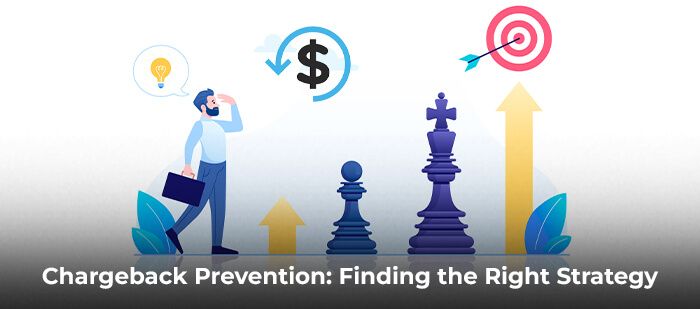
What Is a Chargeback?
The term “chargeback” refers to the process of disputing a chargeback is when a consumer contests a charge made on their credit or debit card with the bank that issued it. The process is carried out through the request of the customer to have their bank eliminate any charge on their credit card and, in turn, cancel the sale transaction. The reasons for this can be varied and include fraudulent charges to credit cards, or not receiving the item.
In the United States. The Fair Credit Billing Act created chargebacks in order to safeguard customers from charges that are fraudulent. Although it is good for the customers, however. Chargebacks can take away time as well as money and could result in the loss of goods or services.
When the customer makes their request to the bank, it will begin the chargeback process. This is the process of holding the disputing charges funds till a definitive decision is made. The bank issuing the charge will make a decision on the basis of any evidence from the merchant of the transaction is valid. If the bank is convinced by the customer is legitimate. The charge is canceled then it is then the funds return to the customer by the bank that the merchant uses (acquiring bank). If, however, the bank is in the same camp as the merchant. Then the disputed funds are returned to the merchant’s business account at the bank.
Which Industries Are at High Risk for Chargebacks?
While chargebacks are a universal problem for merchants, certain industries have a higher risk of receiving chargebacks.
- Adult products and services
- Airline tickets and tourism
- Online gaming
- Pharmaceuticals
- Subscription-based businesses
- Telemarketing
- Timeshares
- Tobacco products
- Crypto currency
- Dating services
- E-cigarettes
- Medical marijuana
Finding the Right Chargeback Fraud Prevention Strategy
Merchants must tread a delicate line when it comes to their chargeback fraud prevention method. Insufficiently strict fraudsters can use the fake positive rate could cause as much damage in the same way as fraud involving chargeback. Insufficient and the business becomes an easy target for skilled fraudsters. The answer lies in finding the right balance between technology, rule-setting, and practicality.
For CNP merchants in particular seeking to achieve the right balance between fraud prevention is of paramount importance. Recent news reports about major security breaches have heightened the degree to which consumers are concerned about concerns about their data security.
Customers want to know that the merchants are using the most recent technologies in digital security technologies to safeguard their data. This is why many merchants choose to employ a hefty strategy. Better to implement a multilayered fraud prevention strategy that makes use of appropriate technology at the right moment.
A Multilayered Fraud Prevention Strategy
A trustworthy multilayered strategy for preventing fraud employs a combination of different technologies that work together to prevent and detect fraud. Instead of using 3D Secure or biometrics. Multilayered fraud employs a custom combination of technology to stop fraud involving chargebacks.
![]()
Email us anytime!
Email customer service 24/7
![]()
Call us anytime!
Reach customer care 24/7 at +1 (888) 901-8653
It is crucial for merchants to be aware that a standard solution for preventing chargeback fraud does not suffice to accomplish the job. Each merchant does not have the same customer demographics and sales model or infrastructure, which makes it impractical to employ a plug-and-play fraud prevention plan.
specialists in the field of fraud prevention
Though most merchants don’t have enough time to become specialists in the field of fraud prevention methods, it can assist in becoming acquainted with the choices that are available. Understanding the fundamentals of fraud prevention can help merchants to address customer concerns and inquire about the appropriate questions to their payment solutions provider.
- IP intelligence. A thorough examination of IP Address used for the transaction to identify potential risks that could be associated with the address. Merchants are able to stop transactions that are fraudulent IP addresses.
- Device fingerprinting. It uses device information and reputation scores to verify an transaction request. It also protects against fraudsters that override cookies and other identifyrs.
- Merchant Co-Op. Transactions are checked against the list of orders that look for matches to fraudulent accounts. The technology can be tailored to meet the requirements of merchants.
- Address Verification Service (AVS). Verifies the address associated with the card holder by using the look-up of a comparison. The comparison does not include the entire address, which makes it easier for fraudsters and criminals to thwart this technique.
- 3D Secure. Utilizes a model with three domains to confirm debit and credit card transactions. A simple security feature that can be strengthened by other alternatives.
- Card and account information is changed with a token identification. The token is generated by the Token Service and then issued to devices of the customer by its Token Issuance method. This makes it difficult for fraudsters to decode the token.
- The locations of the cardholder, as well as the location of the user, are the same.
- Secure encrypted communication between payment devices and customer devices. Solutions.
More blogs to check out
- Tokenization and Fraud Prevention: An Overview
- What is Chargeback Fraud | How to prevent It
- Chargeback Fees: An Overview
- Chargeback Representment: Improving Winning Rates
The key to these fraud prevention techniques lies in knowing which choices fit the business’s specific requirements. It is essential to know who is buying what and how they are purchasing. Knowing this information will give you an understanding of the risk of fraud in general and can be utilized as part of an all-inclusive chargeback fraud prevention strategy.
Creating a Custom Chargeback Fraud Prevention Strategy
Utilizing every kind of technology can create more problems. Typically because it blocks valid transactions from being accepted. People are annoyed by the inefficient and sloppy payment approval processes. And eventually, abandon the purchase. The most effective method of multilayered fraud protection is the perfect mix of technology for merchants and puts it in place when it is needed.
Here are some of the questions that merchants need to inquire regarding their fraud prevention strategies:
- Are they adjustable?
- Will it be able to adapt to changes in buying and threats?
- How do I update the software?
- Does this strategy grow in the context of technology, business, and the customer base?
- What is the extent of prevention of fraud?
- What degree of human involvement is needed?
Being able to access this information lets merchants collaborate in conjunction with charging back prevention experts to design an innovative strategy practical, efficient, and measurable.
Moving forward with a trusted Chargeback Fraud Prevention Strategies
Merchants are under great pressure to provide a fast easy, effective, and efficient payment method. The most effective way to offer this to your customers is to provide an integrated solution that utilizes the most effective, top-of-the-line technology to protect, detect and analyze the purchase data.
Be aware of your the option of preventing fraud. Utilizing a custom solution will provide you with the security you need to create trust within your customer. The team at Chargeback Expertz can assist you implement your fraud prevention plan. You’re always welcome to inquire about fraud prevention technologies.




